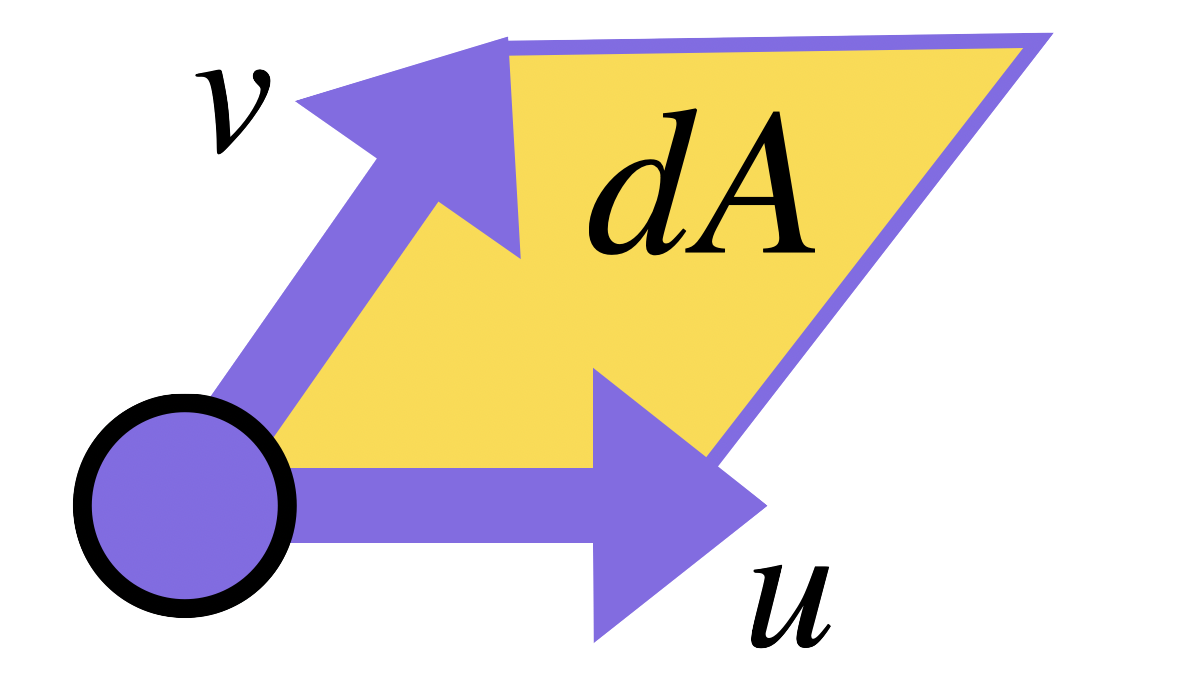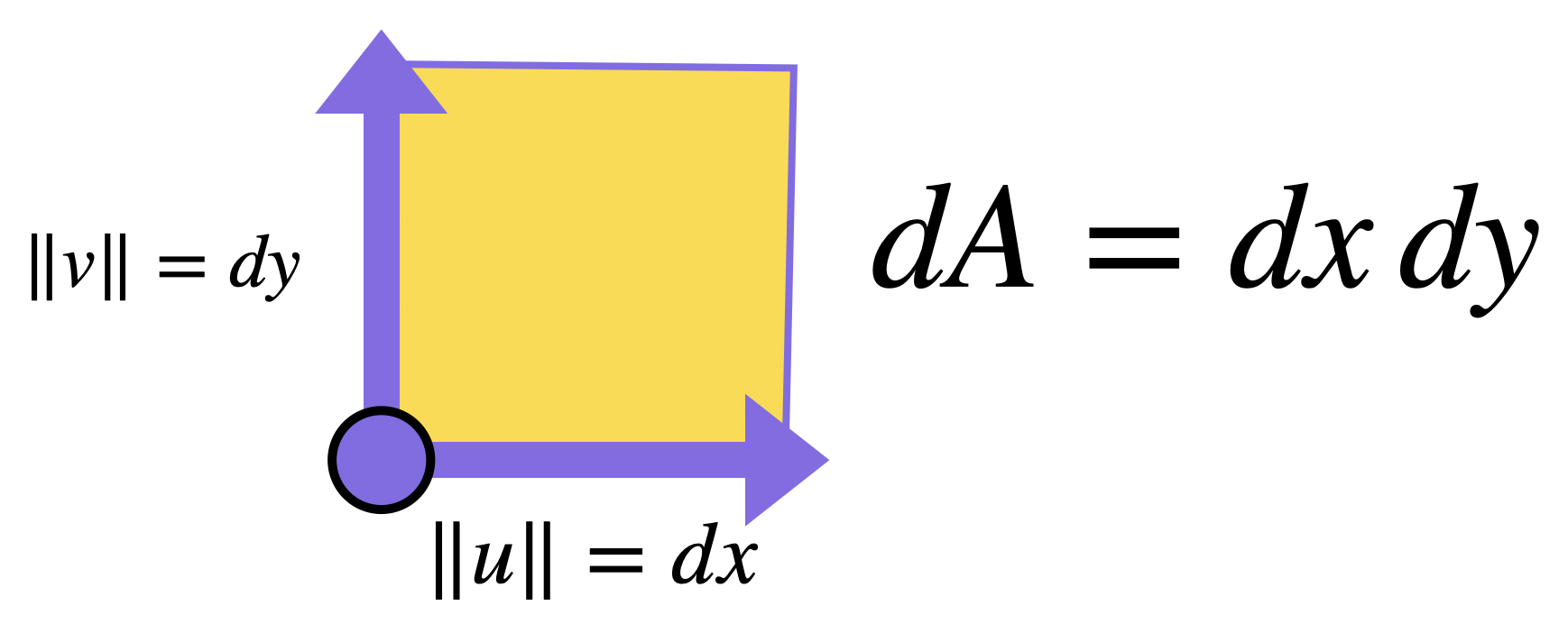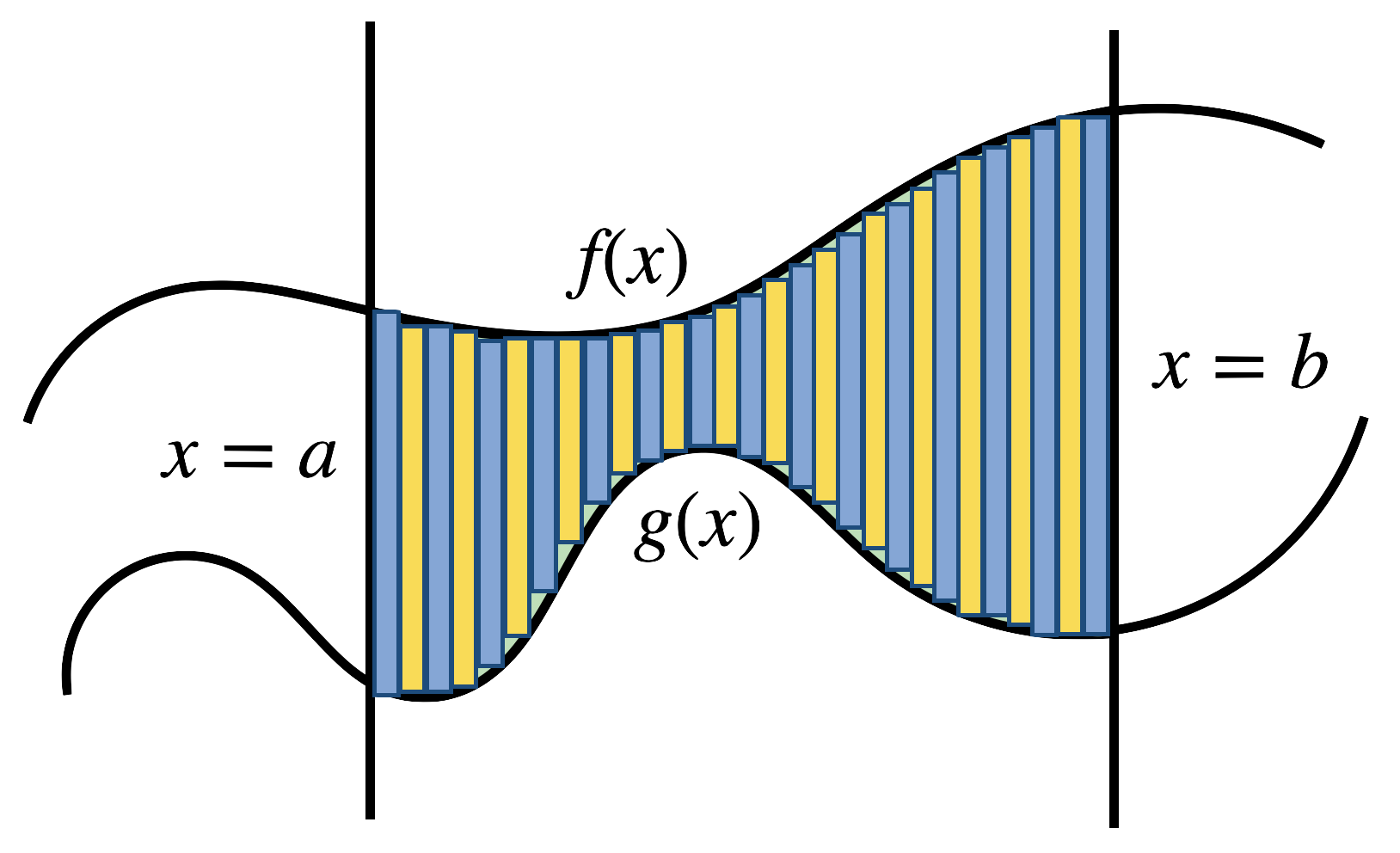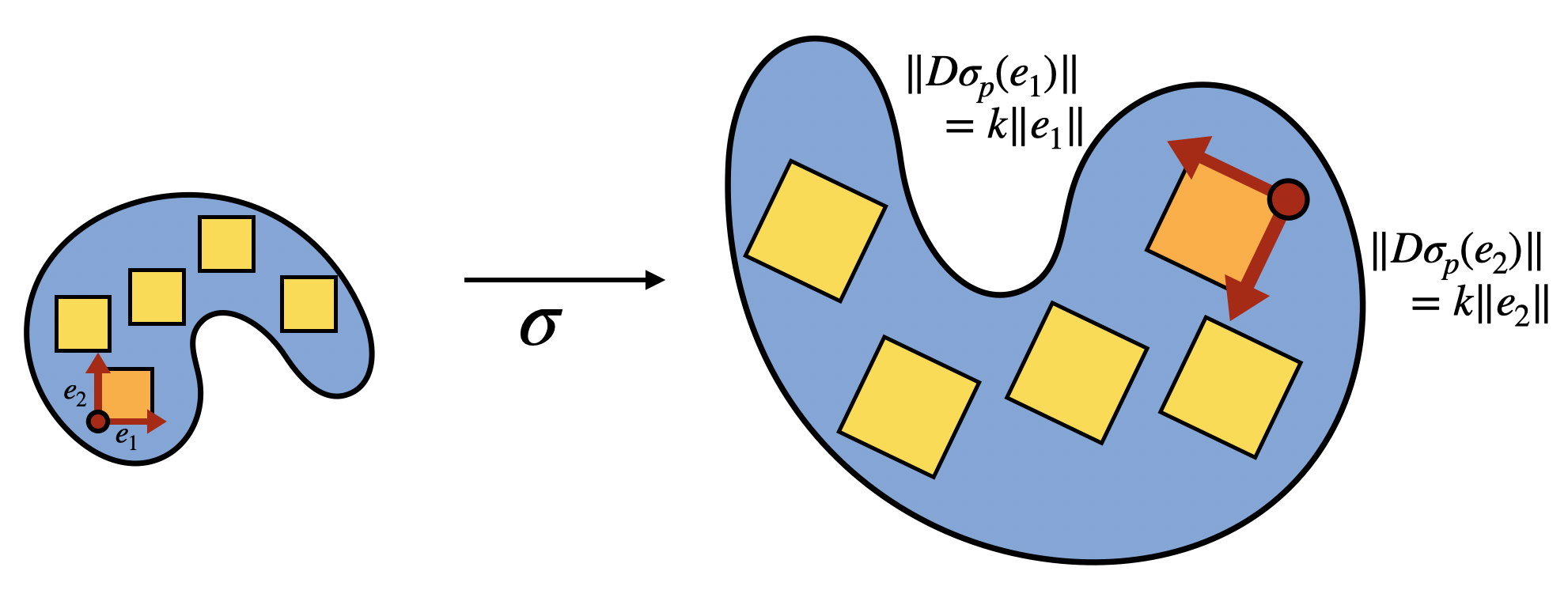15 Area
Now that we know how to measure angle and orthogonality, we can make sense of infinitesimal areas.
Definition 15.1 (Infinitesimal Area in
Because the tangent space is a linear space, we will primarily be interested in infinitesimal areas described by polygons: the most common of which will be parallelograms as they are defined by two vectors. This suggests a natural means of measuring infinitesimal area: just as we took the Pythagorean theorem as the definition of infinitesimal length, we may take the area of a parallelogram (Exercise 15.5) as the definition of infinitesimal area.
Remark 15.1. It may seem like we we are bringing in a new concept to our geometry here - something that can’t be defined in terms of our starting point which only allowed the measurement of infinitesimal lengths. But - as we will show in the final section of this chapter, this is not the case. We can derive this formula for
Definition 15.2 (Measuring Infinitesimal area:

The most common (and useful!) parallelograms that we will encounter are rectangles, due to our use of

Just like lengths, once we have a means of measuring the infinitesimal notion, we can zoom back out to recover what we are really after via integration.
Definition 15.3 (Area in
15.1 Iterated Integrals
How do we compute an integral over a 2-dimensional region, with respect to the infinitesimal area
Conversely, we could have instead sliced our approximation into columns (integrating
Thus, thanks to the fact that
In practice, this will be our main means of calculating area. It becomes especially tractable when the region
Theorem 15.1 (Area Between Two Curves) Let

Then its area can be computed via
Proof. Then at each fixed

The inner integral here is straightforward to evaluate: there are no

This is how we can define rigorously the area of a circle: we know (for example) that the unit circle has equation

Corollary 15.1 (Defining
Anytime we can describe a region with functions, we are back to calculus. Sometimes this is impossible for an entire region all at once, but we can break it into smaller regions, each of which are described by functions.
Example 15.1 (Area Between Piecewise Curves) Compute the area between the curve
Drawing the region, we decide to divide it into two regions

In each of these regions we can specify the boundaries as functions of
The total area is the sum of these,
We can use this definition of area to compute the area of a triangle in the plane, since we now know how to describe straight lines as affine curves.
Exercise 15.1 (Area of Right Triangle With Calculus) Use calculus to find the area between the
Exercise 15.2 (Area of a General triangle) Set up an area integral to measure the area of a triangle with vertices

Show the result gives you half the base times the height.
Similarly, we can make quick work of some impressive results of archimedes, after checking that
Exercise 15.3 (Quadrature of the Parabola with Calculus)
- Write down a formula for the area of the triangle whose third vertex lies at
- Use calculus to find the point
- Finally, compute the area of the parabolic segment (via integration, as the area between two curves). Show that its exactly
(Hint: instead of finding the height of the triangle to use
15.2 Isometries & Similarities
Now that we know how to evaluate an area integral, its time to study some of its properties. Our first question with every new concept we define should be how does this concept interact with isometries? So we investigate this below.
Theorem 15.2 (Isometries Preserve Area) Let
Proof. Let

Thus, the integral
Theorem 15.3 (Similarities Scale Area) Let
Proof. Running a similar argument to the above, we see that the infinitesimal unit square defined by

The area of such a square is
15.3 Area and General Mappings
Both isometries and similarities are rather special: they send every infinitesimal unit square to another square, possibly scaled in size by a constant factor.
In this section we are interested in discovering what happens to an area under a general map

Indeed, by Corollary 14.8 we know that at each point
Thus the area of the region
Example 15.2 (Area under the map

Using all that we’ve learned, we can actually compute the area of this region without having to even describe it explicitly! We know that at each point
Thus the change in area for the infinitesimal square based at
Finally, let’s consider a general map

But we can figure out from this what

And we know how to calculate the area of a parallelogram using the vectors determining its sides (Exercise 14) - this is just the determinant of the derivative matrix.
Theorem 15.4 If
Much like we have done for isometries, similarities, and conformal maps before; this lets us compute the area of a region
Theorem 15.5 Let
We can use this to find areas that seem difficult at first: for example, we will be able to calculate the area of an ellipse in terms of the area of a circle (we’ll find the circles’ area in the next section).
Exercise 15.4 The map

Computing the Jacobian we see

Thus we can calculate the area of the ellipse
We will see in shortly that
One thing to be careful about: while all isometries preserve area, not all area-preserving maps are isometries! Take any determinant 1 matrix on the plane and use it as a linear map. This preserves area of all subsets (as derivative is itself, and so determinant of the derivative is 1). But does not preserve lengths: try a hyperbolic like
15.4 The Jacobian, Abstractly
This optional section gives a second means of deriving the jacobian, instead of taking the fact that we already understand the area of a parallelogram. We could instead ask, what sort of behavior do we want the function
Instead of being explicit about what number
To get further than this, we need a proposal about how
For vector addition, we analogously propose that the area spanned by
We’ve illustrated the case of addition and scalar multiplication in the first vector above, but of course it should not depend which vector we are talking about, so we propose that
We have one final thing to consider: what is the relationship between
In fact, these properties alone are enough to fully determine the function
Exercise 15.5 Using only the following facts about the function